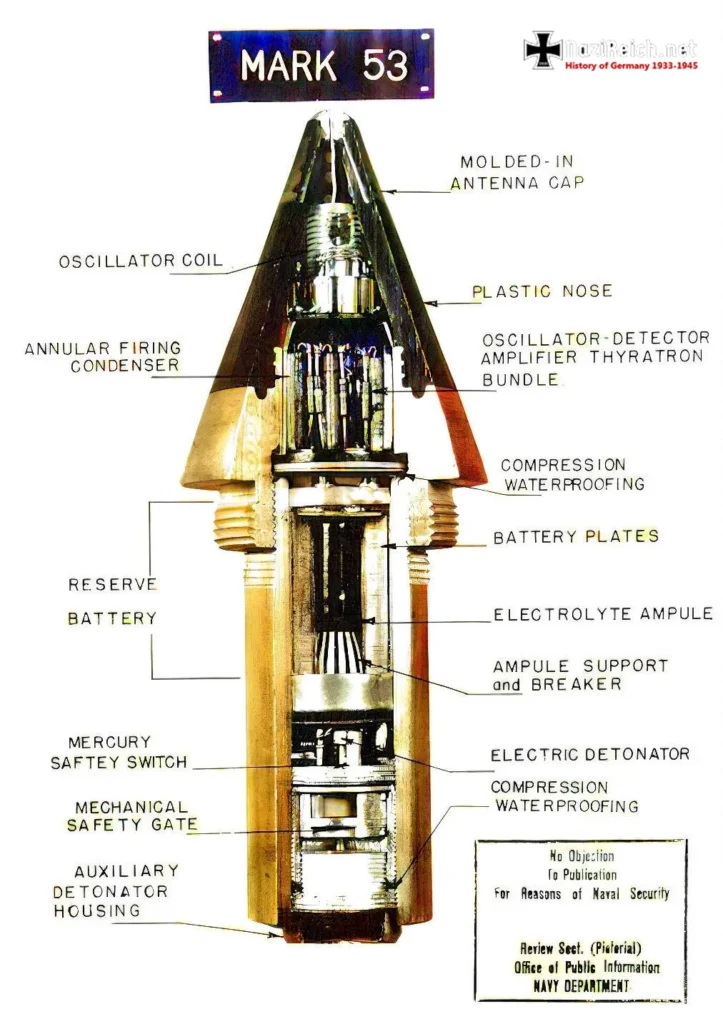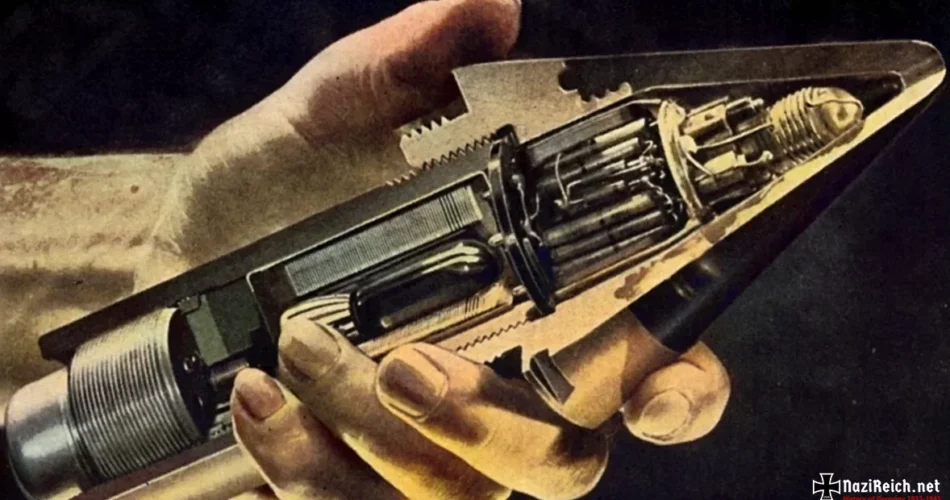In the final year of World War II, as the Allies pushed towards victory, they harnessed a groundbreaking technology that would significantly impact both the outcome of the war and future military engagements. This technology, known as the proximity fuse, revolutionized the effectiveness of anti-aircraft artillery and significantly increased the accuracy and lethality of Allied firepower.
Fast Track:
TL;DR
The proximity fuse, developed through intense collaboration between British and American scientists, was designed to detonate a shell when it came close to its target, rather than on impact or at a preset time. This allowed for greater precision in hitting fast-moving aircraft and reduced the number of shells needed to down an enemy plane.

Initially, the technology behind the proximity fuse was conceived during the interwar years but was not feasible until advances in electronics during the late 1930s. Once viable, the British began the development, which was significantly accelerated with American collaboration following the entry of the United States into the war after the attack on Pearl Harbor.
One of the critical aspects of the proximity fuse was its secret nature. The fear that this technology could fall into enemy hands led to strict controls on its use, primarily limiting it to naval engagements where unexploded ordinance would not be recoverable by the enemy. However, as the war progressed, the success of these fuses in naval battles led to their eventual deployment in ground artillery, significantly impacting the effectiveness of Allied forces during key battles, such as the Battle of the Bulge.
The development and deployment of the proximity fuse required overcoming significant technical challenges, including the miniaturization of the radar components and ensuring the fuses could withstand the forces of being fired from artillery. The dedicated efforts of scientists and engineers, working under immense pressure and with limited resources, were crucial in overcoming these obstacles.
The creation of the proximity fuse involved a remarkable collaboration between British and American scientists and engineers during World War II. Here’s a more detailed look at some of the key figures and groups involved:
- British Scientists and Engineers: The initial concept of the proximity fuse emerged in Britain. The Telecommunications Research Establishment (TRE), which was a part of the UK’s scientific research community, played a pivotal role. Henry Tizard, a British scientist and inventor who was also the president and director of Imperial College London, was instrumental in spearheading British efforts. The TRE team was the first to conceive the idea of using radar technology to develop a proximity fuse.
- Sir Henry Tizard: He led the Tizard Mission, which was crucial in transferring British scientific advancements, including the cavity magnetron (essential for radar) and the concept of the proximity fuse, to the United States. This mission significantly boosted the collaborative efforts.
- American Scientists and Engineers: Once the concept was transferred to the United States, American scientists took over its development and refinement. This work was coordinated under the auspices of the newly established National Defense Research Committee (NDRC).
- Merle Tuve: An American scientist who was pivotal in developing the proximity fuse in the U.S. He led a team that worked on adapting radar technology into a functional fuse small enough to fit into artillery shells.
- Vannever Bush: A prominent American engineer and scientist, Bush was the head of the NDRC. He was critical in organizing and directing the American scientific research efforts during the war, including the development of the proximity fuse.
- Ray Mindlin: An associate professor from Columbia University, he was recruited to help improve the design of the vacuum tubes used in the fuses, enhancing their durability to withstand being fired from guns.
These individuals and many others contributed to the development and deployment of the proximity fuse, which proved to be a game-changer in anti-aircraft warfare, saving countless lives and significantly impacting the course of the war.
TL;DR
- 🌍 Allied Collaboration: The proximity fuse was a product of British innovation and American industrial capability, symbolizing the potent results of Allied cooperation.
- 💣 Technological Breakthrough: This device dramatically improved the accuracy and efficacy of anti-aircraft artillery, saving countless lives and hastening the end of the war.
- 🚀 Controlled Usage: Due to the risk of technological espionage, the Allies initially restricted the use of proximity fuses to settings where they could not be studied by the enemy.
- 📈 Impact on Ground and Naval Warfare: Although first used in naval battles, the success of the proximity fuses soon led to their adoption in ground artillery, significantly altering the dynamics of battlefield engagements.
- 🛡️ Secrecy and Security: The development and deployment of the proximity fuse were carried out under the highest secrecy, demonstrating the strategic importance of technology in warfare.
- 🕊️ Lasting Legacy: The proximity fuse set the stage for modern guided munitions and remains a fundamental component of military ordnance, underlining the enduring impact of World War II-era innovations on contemporary military tactics.
The story of the proximity fuse not only highlights the technical ingenuity of the Allies during World War II but also illustrates how technological advances can have far-reaching effects on the strategies and outcomes of military conflicts.
